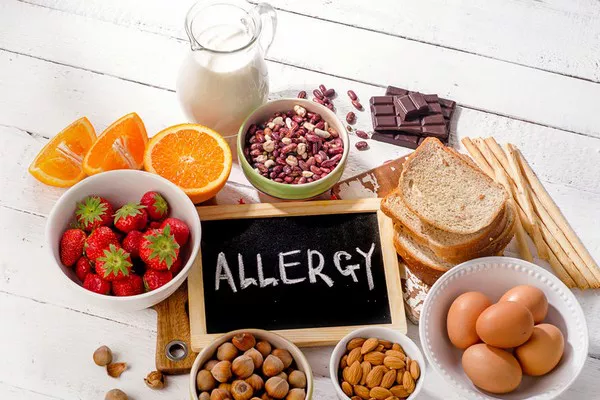Living with allergies can be challenging, as they often require careful consideration of your diet to avoid allergic reactions. Allergies can range from mild to severe, with symptoms varying from sneezing and itching to life-threatening anaphylaxis. Whether you’re dealing with food allergies, environmental allergies, or both, what you eat and drink can significantly impact your quality of life. In this article, we will provide a comprehensive guide on what to eat and drink when you have allergies, offering tips to help you manage your allergies and enjoy a safe and satisfying diet.
Understanding Allergies
Allergies occur when your immune system reacts to substances that are usually harmless, treating them as threats. These substances are known as allergens and can be found in various forms, including foods, pollen, dust mites, insect stings, and more. Common allergic reactions include:
1. Food Allergies: Allergic reactions to specific foods such as peanuts, tree nuts, shellfish, milk, eggs, and wheat.
2. Environmental Allergies: Allergic reactions to airborne allergens like pollen, dust mites, pet dander, and mold spores.
3. Insect Sting Allergies: Allergic reactions to insect stings, most commonly from bees, wasps, hornets, and fire ants.
4. Medication Allergies: Allergic reactions to certain medications, such as antibiotics, non-steroidal anti-inflammatory drugs (NSAIDs), and others.
It’s important to determine the specific allergens affecting you through allergy testing conducted by a healthcare provider. Once identified, you can take steps to avoid these allergens in your diet and daily life.
Managing Food Allergies
1. Reading Labels
When you have food allergies, reading food labels becomes essential. The Food Allergen Labeling and Consumer Protection Act (FALCPA) in the United States requires manufacturers to clearly label common allergens in their products. Look for phrases like “Contains” followed by the allergen (e.g., “Contains peanuts”) or allergen names listed in the ingredient list. Be vigilant, especially with packaged and processed foods.
2. Avoid Cross-Contamination
Cross-contamination occurs when an allergenic substance comes into contact with allergen-free food. To prevent cross-contamination, thoroughly clean kitchen utensils, cutting boards, and cookware after each use. Additionally, consider using separate cooking utensils and preparation areas for allergen-free and allergenic foods.
3. Cook at Home
Cooking at home allows you to have more control over the ingredients and preparation methods, reducing the risk of allergen exposure. It’s also a great way to explore allergen-free recipes and experiment with safe ingredients.
4. Substitute Allergenic Ingredients
Explore allergen-free alternatives for ingredients that trigger your allergies. For example, use almond flour or coconut flour in place of wheat flour, and substitute dairy milk with almond, soy, or oat milk. There are many allergy-friendly products available in stores and online.
5. Communicate When Dining Out
When dining out, inform your server about your food allergies. Ask questions about ingredients and preparation methods to ensure your meal is allergen-free. Many restaurants are willing to accommodate dietary restrictions, but clear communication is key.
Managing Environmental Allergies
1. Pollen Allergies
Pollen allergies are prevalent, and they can make outdoor activities challenging during peak pollen seasons. To manage pollen allergies:
Check pollen forecasts to plan your outdoor activities on low-pollen days.
Keep windows closed during high-pollen seasons.
Shower and change clothes after spending time outdoors to remove pollen from your body and clothing.
Consider using high-efficiency particulate air (HEPA) filters in your home to reduce indoor pollen levels.
Talk to your healthcare provider about allergy medications and immunotherapy (allergy shots) for long-term relief.
2. Dust Mite Allergies
Dust mites are tiny, invisible creatures that thrive in dust and are common indoor allergens. To manage dust mite allergies:
Use allergen-proof covers for pillows, mattresses, and box springs.
Wash bedding in hot water (above 130°F or 54°C) weekly.
Vacuum your home regularly using a vacuum cleaner equipped with a HEPA filter.
Keep indoor humidity levels below 50% to discourage dust mite growth.
Consider using allergen-proof covers for pillows, mattresses, and box springs.
3. Pet Allergies
If you’re allergic to pet dander, managing allergies when you have pets can be challenging. To reduce pet allergen exposure:
Keep pets out of bedrooms and off furniture.
Bathe and groom pets regularly.
Use HEPA air purifiers in your home.
Vacuum and clean your home frequently, including pet bedding.
Wash your hands after petting animals.
Managing Insect Sting Allergies
Insect sting allergies can be life-threatening, so it’s crucial to take preventive measures:
1. Avoid Insect Stings
Wear protective clothing, such as long sleeves, pants, and closed-toe shoes, when spending time outdoors.
Use insect repellent on exposed skin.
Be cautious around flowering plants, food, and sweet beverages, which can attract insects.
Avoid outdoor activities during peak insect activity times, such as dawn and dusk.
2. Carry Epinephrine
If you have a known insect sting allergy, carry an epinephrine auto-injector (e.g., EpiPen) as prescribed by your healthcare provider. Make sure you and those close to you know how to use it in case of an emergency.
Conclusion
Living with allergies can be challenging, but with the right strategies and precautions, you can minimize allergen exposure and enjoy a healthy and fulfilling life. Whether dealing with food allergies, environmental allergies, or insect sting allergies, it’s crucial to communicate your allergies with healthcare providers, family members, and friends. By reading labels, managing your environment, and making informed food and drink choices, you can significantly reduce the risk of allergic reactions and improve your overall quality of life. Always consult with an allergist or healthcare provider for personalized guidance and treatment options specific to your allergies.


